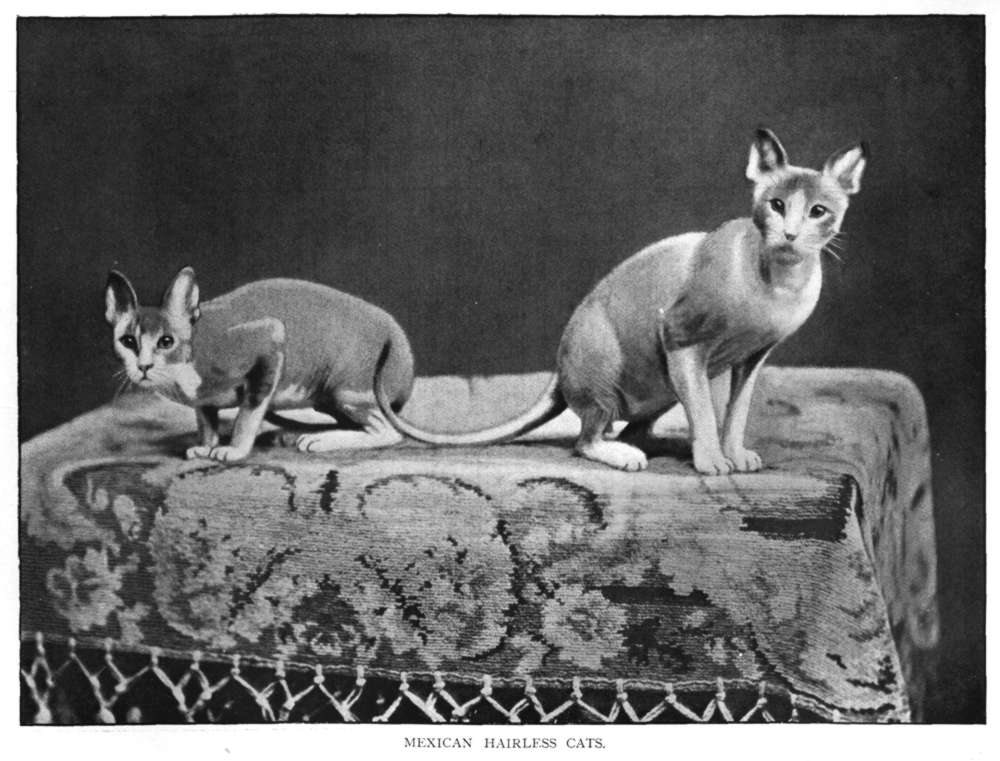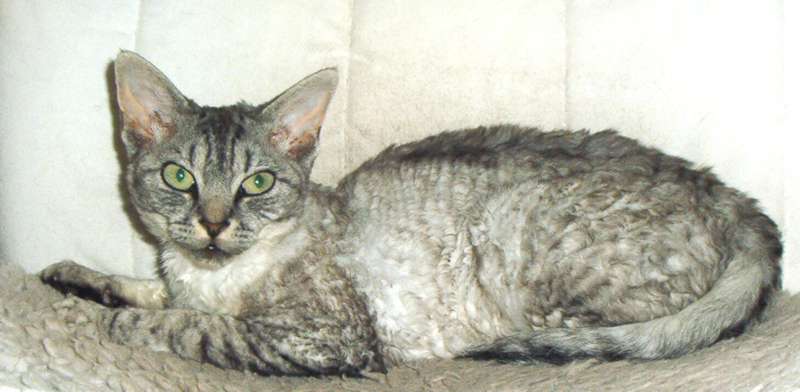Our Articles
First Cat Show - First Sphynx? - Blood Groups in cats - Register of Blood Groups
|
The First Cat Show
This is about the first official cat show held in 1871. All the facts are now collected, but it proved much more complicated than I at first thought, with seven different dates for the show itself being quoted in different places. In the process of research, I have now tracked down all those dates, together with many books, websites, and reports. The complete article is available online, and as a printed monograph! Please go to this link for all the details. Currently (April 2006) I am working on converting an old book into modern form which has this interesting comment: My first association with cats from a fancy point of view was at the Crystal Palace in 1871. Many will remember the sensation created by this first Cat Exhibition, which opened up a channel for the feline race never hitherto dreamt of. Many who then were seized with the "cat fever" will recollect how this first programme was subjected to criticism. "The very idea of a Cat Show!" The usual wisdom after events have been successful was of course strongly in evidence. Yet it should hardly have been considered doubtful, with the many colours and varieties of both Short- and Long-haired cats known to exist, that it would turn out an attractive and instructive addition to the exhibitions of various descriptions of live stock. However wise the general bulk of fanciers have become after this first show, there is all the more reason that credit should be given to the individual who first conceived the idea of an exhibition of cats, and to Mr. Harrison Weir the full measure of this honour belongs, his original programme being efficiently carried out by the late Mr. F. Wilson, of Crystal Palace Executive fame. Mr. Weir's interest in cats, and his efforts to improve their condition by all legitimate means, are so well known, that I need only emphasise the fact, and in addition add that the Crystal Palace directors presented him with a handsome testimonial in recognition of their appreciation of his important and valuable services. |
|
 |
|
|
(Not!) The First Sphynx?
Letter reproduced in "The Book Of The Cat", Frances Simpson, 1903. The writer of that chapter (H. C. Brooke), prefaced it by:- A most extraordinary variety, of which next to nothing appears to be known, is the hairless cat, and we cannot do better than quote in extenso the description given by the owner of what, if his surmise should unhappily prove to be correct, was the last pair of these peculiar animals, a portrait of which we give. Albuquerque New Mexico, February 3rd, 1902. MR. H. C. BROOKE. Dear Sir,—Yours of January 20th is at hand. In answer would say my hairless cats are brother and sister. I got them from the Indians a few miles from this place. The old Jesuit Fathers tell me they are the last of the Aztec breed known only in New Mexico. I have found them the most intelligent and affectionate family pets I have ever met in the cat line; they are the quickest in action and smartest cats I have ever seen. They are fond of a warm bath, and love to sleep under the clothes at night with our little girl. They seem to understand nearly everything that is said to them; but I have never had time to train them. They are marked exactly alike—with mouse-coloured backs; with neck, stomach, and legs a delicate flesh tint. Their bodies are always warm and soft as a child's. They love to be fondled and caressed, and are very playful; will run up and down your body and around your waist like a flash. "Nellie" weighs about eight pounds, and "Dick" weighed ten pounds; but I am sorry to say we have lost "Dick". We have never allowed them to go out of the house, as the dogs would be after them. They were very fond of our water spaniel, and would sleep with her. "Dick" was a sly rascal, and would steal out. One night last year he stole out, and the dogs finished him. His loss was very great, as I may never replace him. The Chicago Cat Club valued them at 1,000 dollars each. They were very anxious for me to come on with them for their cat shows, but I could not go. They were never on exhibition; as this is a small city, I feared they would be stolen. I have made every endeavour to get another mate for "Nellie", but have not been successful. I never allowed them to mate, as they were brother and sister, and I thought it might alter "Nellie's" beautiful form, which is round and handsome, with body rather long. In winter they have a light fur on back and ridge of tail, which falls off in warm weather. They stand the cold weather same as other cats. They are not like the hairless dogs, whose hide is solid and tough; they are soft and delicate, with very loose skin. "Nellie" has a very small head, large amber eyes, extra long moustache and eyebrows; her voice now is a good baritone, when young it sounded exactly like a child's They have great appetites, and are quite dainty eaters—fried chicken and good steak is their choice. Have never been sick an hour. The enclosed faded picture is the only one I have at present; it is very lifelike, as it shows the wrinkles in its fine, soft skin. "Dick" was a very powerful cat; could whip any dog alone; his courage, no doubt, was the cause of his death. He always was the boss over our dogs. I have priced "Nellie" at 300 dollars. She is too valuable a pet for me to keep in a small town. Many wealthy ladies would value her at her weight in gold if they knew what a very rare pet she is. I think in your position she would be a very good investment to exhibit at cat shows and other select events, as she doubtless is the only hairless cat now known. I have written to Old Mexico and all over this country without finding another. I would like to have her in some large museum, where she would interest and be appreciated by thousands of people. —Trusting this will reach you in safety, I am, very truly yours, F. J. SHINICK. Brookes added:- We can only add, whilst deeply regretting that Mr. Shinick did not mate his cats, the earnest hope that we may hear that he has discovered the existence of other specimens. |
|

|
To me, this letter and photograph reproduced from a book printed in 1903 (it is not a later reprint), raised some interesting questions. Unfortunately others have used this information to invent answers without any actual evidence! Firstly, Mr. Shinick mentions that "they are the last of the Aztec breed known only in New Mexico." Some have interpreted that to mean that the breed now known as Sphynx, has a history many hundreds of years older than is presently assumed. Secondly, some also assume that the Sphynx's current phenotype was already complete in 1902, or earlier. Those are just the two most common errors as my research article shows. The results of clarifying research will be published later in 2008. Tony, Odense 29/12/2002 and Vormark 1/10/2008 |
 |
|
|
Blood Groups in Cats
I started this investigation following a blood test on our Devon Rex kitten. She was found to be type B, when both her parents had been tested as type A. I had already been involved with the article by Judith Picknell, and the Danish translation of it, so was aware of the potential problems of mismatched blood types for a mating. I then looked for and found various articles on the Internet, and have compiled all the data available to me into a document - you can link to the document here for the detailed information. (Each link in the pdf document is active.) At the beginning I list the URL's and then extract the data specifically on the distribution of blood groups. They are shown in text only form. I have corrected any obvious spelling mistakes. Although the importance of blood groups is known to breeders, sometimes the exact reason is not understood. Obviously, for blood transfusions, correct matching is important, although the difficulty of matching is much less than for humans with the cats more limited range of blood types. However, the effect of incompatibility between mother and kittens is not at all well known. The risk to kittens in the first few hours after birth can, in some instances, be very high; in fact, in some litters mortality will be 100% if no precautions are taken. Information about the Blood Groups Register follows: your help with information would be greatly appreciated. |
This is Willow, Myrtle's Devon Rex

|
 |
|
|
Register of Blood Groups
Dr. Diane Addie of the University of Glasgow Veterinary
School originally started a Register of Stud and Queen's
Blood Types. As many cat owners and breeders as possible are
needed to register their own cat's blood type in order to
greatly expand the existing database.Click here to see it.
Here is an email response form for the Register.
|
|
 |